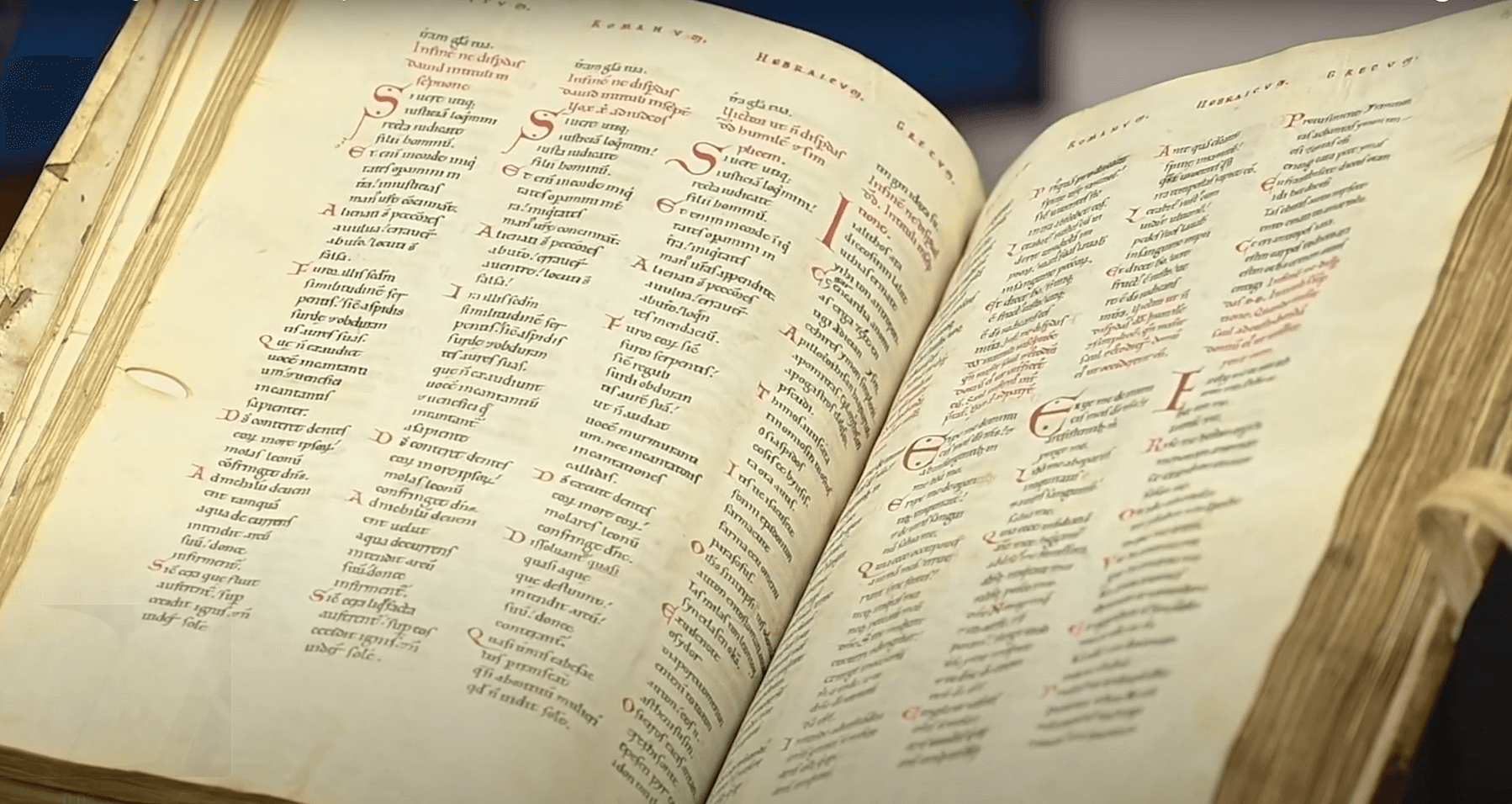
Winter School
Digitizing the Materiality of the Premodern Book
This course is part of the project “Digitizing the Materiality of the Premodern Book” ( https://dha.acdh.oeaw.ac.at/de/digitizing-materiality-premodern-book ) and licensed Creative Commons BY NC SA. This project (2022-2023) was funded by CLARIAH-AT with the support of BMBWF.
Rethinking the Book: Exploring Book History from Ancient Inscriptions to Digital Texts & Bibliographical Description
This module of the course “Digitizing the Materiality of the Pre-Modern Book”, comprising five video lessons, provides an introduction to book history, addressing the central question: What is a book? The module traces the evolution from ancient stone inscriptions and scrolls to the modern digital age, where texts are accessed digitally by “scrolling”. It shows how we may first have to rethink our understanding of what a book is when focusing on the materiality of pre-modern books.
Erich Renhart initiates the module with an introduction to book history, illustrated by examples from the University of Graz’s Special Collections.
Megan Piorko continues the discussion, questioning our perceptions of what constitutes books and texts. The historical evolution of texts, from stone inscriptions and scrolls to codices, followed by the emergence of incunabula in the early modern period, visually mimicking the style of manuscripts that came before them, then the boom of the print revolution, where print finds its distinct look, and then, the current digital age, prompts a reevaluation of what constitutes a text. Commonly, texts are perceived merely as books like we know them today, identified through basic bibliographical metadata such as author, title, publisher, location, and publication year. However, scholarly bibliographical description delves much deeper, examining the physical characteristics of books as objects. Piorko’s sessions on descriptive bibliography, divided into theoretical and practical parts, delve into the structure of early modern books. The theoretical session discusses the methodology for bibliographical description, while the practical session involves hands-on descriptive bibliography using the University of Graz’s collection.
From Books to Bytes: Digitizing Pre-Modern Books
The second module focuses on the digitization of pre-modern books and aimed specifically at participants with limited experience in digitization. This second module sheds light on digitizing pre-modern books, thereby bridging the gap between traditional book history (module 1) and the digital scholarly editing (module 3).
Pia Fiedler initiates the module with a tour of the University of Graz’s Special Collections Digitization Lab, highlighting challenges in digitizing early modern books and demonstrating the equipment used, such as various scanners and book tables for rare book digitization.
Subsequently, Sean Winslow leads sessions on heritage imaging, starting with theoretical aspects to provide a foundational understanding of imaging in historical text preservation. He then conducts a practical demonstration of a multi-spectral imaging setup, a cutting-edge technology making it possible to reveal details in old books and manuscripts that are invisible to the naked eye.
Introduction to Digital Scholarly Editing
The third module of the Winter School is an introduction to digital humanities, specifically digital scholarly editing for pre-modern books. It is ideal for those viewers who have previous experience with historical books but lack knowledge in their digitization or in creating digital editions.
Sarah Lang opens the module with presentations focusing on the principles of modeling theory for digital scholarly editing, with a particular emphasis on XML and the Text Encoding Initiative (TEI) standard, the state-of-the-art in digital scholarly editing.
The module contains practical exercises in encoding a title page using TEI-XML. Lang then progresses to more advanced digital scholarly editing topics using TEI, including the representation of facsimiles and the creation of a critical apparatus.
Sean Winslow presents three sessions centered on the manuscript description module of TEI. He offers insights into the integration of digital scholarly editions in the semantic web.
The module furthermore contains an introduction to Transkribus, a transcription software proficient in OCR-ing historical prints and HTR-ing handwritten documents, whose transcriptions can be exported directly into TEI-XML.
The module concludes with a discussion of the future of scholarly editions, questioning the continued relevance of print editions in the digital era, exploring challenges in digital archiving, and discussing the scholarly evaluation and academic review of digital resources.